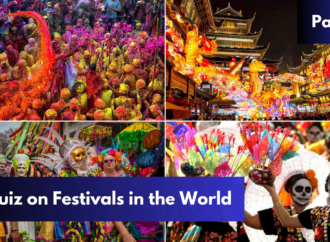On August 19, 2024, a rare type of full moon called a Super Blue Moon, also known as the ‘Sturgeon Moon’, appeared. A supermoon happens when the moon is at its closest point to Earth during its orbit, making it look about 14% bigger and 30% brighter than when it’s farther away.
What is a Full Moon?
A full moon occurs when the moon is directly opposite the sun, so the entire side we see is fully lit. The full moon usually rises around sunset and sets around sunrise. It can appear “full” not just on the main night but also on the nights just before and after.
What is a Blue Moon?
A blue moon is when there are two full moons in a single month, which happens every 2-3 years. It can also mean the third full moon in a season that has four full moons. The blue moon on August 19 was the first of four supermoons in 2024, with the others appearing on September 18, October 17, and November 15.
Will the Moon Look Blue?
Despite the name, the moon won’t look blue. The moon might only appear bluish if there are special atmospheric conditions, like smoke or dust in the air. Normally, when the moon is close to the horizon, it will look more yellow or orange because of how light is scattered in the atmosphere.
How Often Do Super Blue Moons Happen?
Super blue moons are quite rare, happening about every 10 to 20 years. While 25% of all full moons are supermoons, only 3% are blue moons, making the Super Blue Moon a special event.
Why Might the Moon Look Bigger or Smaller?
Although a supermoon is technically bigger and brighter, not everyone may notice the difference. The size of the moon can look different depending on where you are, how clear the sky is, and something called the “moon illusion,” where the moon seems larger when it’s near the horizon than when it’s higher in the sky.
















